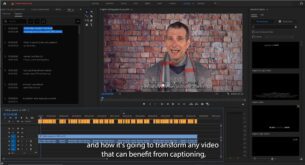 My colleague Tim Siglin wrote an insightful analysis of Adobe’s decision to cease development of the mobile Flash Player that you can read here. To his credit, Siglin actually predicted that Adobe might withdraw Flash from mobile markets in his August article The TouchPad is Dead; Is Adobe’s Mobile Strategy Next? I just hope he doesn’t remind me of that each time I see him for the next three years, but that’s a different story.
My colleague Tim Siglin wrote an insightful analysis of Adobe’s decision to cease development of the mobile Flash Player that you can read here. To his credit, Siglin actually predicted that Adobe might withdraw Flash from mobile markets in his August article The TouchPad is Dead; Is Adobe’s Mobile Strategy Next? I just hope he doesn’t remind me of that each time I see him for the next three years, but that’s a different story.
In the current article, Siglin notes that Adobe will stop developing the Flash Player for mobile devices, and will shift its focus towards convincing developers to produce Apps for these devices to play Flash video. Siglin states that:
The shift not only relieves Adobe of the need to continuously update support for all Android devices—past, present, and future—but also shifts the burden of video playback support to the application developer, since all developers now have the power of embedding Flash Player playback capability into their own applications—via embedded AIR—and testing the app in a controlled environment before it’s put out into the wild.
The bottom line rationale was that the burden of supporting all Android devices had simply become too high. Siglin states:
Adobe had a huge burden in supporting all the variations of Android OS…The problem was so severe that the curve of keeping up with all possible Android combinations would have required Adobe to throw so many resources at variations of Flash Player for Mobile that the group could’ve inadvertently become the largest resource drain within the company, ironic when the problem lies with Google’s allowance of free-forking in the Android OS rather than Adobe’s Flash Player for Mobile plug-in architecture.
This is what I pulled from Siglin’s analysis: I recommend that you read it yourself to get the complete picture. For more of Tim’s work, check out his blog at http://workflowed.blogspot.com/.
 Streaming Learning Center Where Streaming Professionals Learn to Excel
Streaming Learning Center Where Streaming Professionals Learn to Excel







